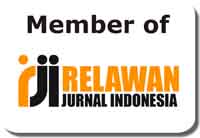Emerging Factors of Communicative Language Teaching (CLT) and Its Application in Indonesian English as a Foreign Language (EFL) Classrooms
Abstract
Communicative Language Teaching (CLT) has been adopted in many countries and has influenced the foreign and second language learning and teaching. This article aims to explore the emerging factors of CLT and how CLT is practiced in Indonesian EFL classroom. This study finds that there are three main phases of the development of CLT. Started from the works of Hymes (1967, 1972), Canale and Swain (1980) and Bachman (1990). Moreover, recent theories in second language acquisition and globalization are two main factors which lead to the widespread of CLT. Finally, in the EFL context the application of CLT has faced many challenges. Socio-cultures, grammar and reading-based exam, and teachers’ low English proficiency make the application of CLT in Indonesian EFL classroom has not reached its objectives yet.
Keywords
Full Text:
PDFReferences
Anderson, J. (1993). Is a communicative approach practical for teaching English in China? Pros and cons. System, 21, 471–480.
Bachman, L. (1990). Fundamental consideration in language testing. Oxford: Oxford University Press.
Brown, H.D. (2000). Principles of language learning and teaching. New York: Longman.
Bryman, A. (2004). Social research methods (2nd ed.). New York: Oxford University Press.
Canale, M., & M. Swain, (1980). Theoretical bases of communicative approaches to second language teaching and testing, Applied Linguistics, 1(1), 1 – 47.Michigan State University – Michigan.
Cronin, P., Ryan, F., & Coughlan, M. (2008).Undertaking a literature review:a step-by-step approach.British Journal of Nursing, 17(1), 38-43.
Hymes, D. (1972). On communicative competence. In J. Pride & J.
Holmes. Socio-linguistics: Selected Reading. Harmondsworth: Penguin.
Krashan, S. (1987). Principles and practice in second language acquisition. Hertfordshire England: Prentice-Hall Internationa.
Ministry of Education of Indonesia Republic. (2015). Kementerian Pendidikan dan Kebudayaan; Badan Penelitian dan Pengembangan. Retrieved on June 11, 2015 from www.litbang.kemdikbud.go.id/index.php.
Nunan, D. (1999). Second language teaching and learning. Massachusetts: Heinle & Heinle.
Nunan D. (2003). The impact of english as a global language on educational policies and practices in the asia-pacific region. TESOL QUARTERLY, 37(4), 589 – 613.
Orafi, S. & Borg, S. (2009). Intentions and realities in implementing communicative curriculum reform. System, 37, 243-253.
Sandra J. Savignon. (2007). Beyond communicative language teaching: What’s ahead? Journal of Pragmatics, 39, 207–220.
Saleh, S. M. (2013). Understanding communicative competence. University Bulletin – ISSUE, No.15 – Vol . 3, 101 – 110.
Thompson, G. (1996). Some misconceptions about communicative language teaching. Oxford, ELT Journal, 50(1), 9 – 15.
UNDANG-UNDANG REPUBLIK INDONESIA NOMOR 14 TAHUN 2005 TENTANG GURU DAN DOSEN (Constitution of Indonesia No. 14, 2005) Retrieved on June 11, 2015 from http://sa.itb.ac.id/Ketentuan%20Lain/UUNo142005(Guru%20&%20Dosen).pdf.
Warschauer, M. (2000). The Changing Global Economy and the Future of English Teaching. TESOL QUARTERLY, 34(3), 511 – 535.
Widodo, H. P. (2012). Pedagogical tasks for shaping EFL college student writers’ critical thinking and self voicing. International Journal of Innovation in English Language Teaching, l(I), 87 – 99.
DOI: http://dx.doi.org/10.31332/lkw.v3i2.587
Copyright (c) 2018 Abd Rahman

This work is licensed under a Creative Commons Attribution-ShareAlike 4.0 International License.
Langkawi: Journal of The Association for Arabic and English indexed by:


















.png)
.png)

.png)
2.png)








